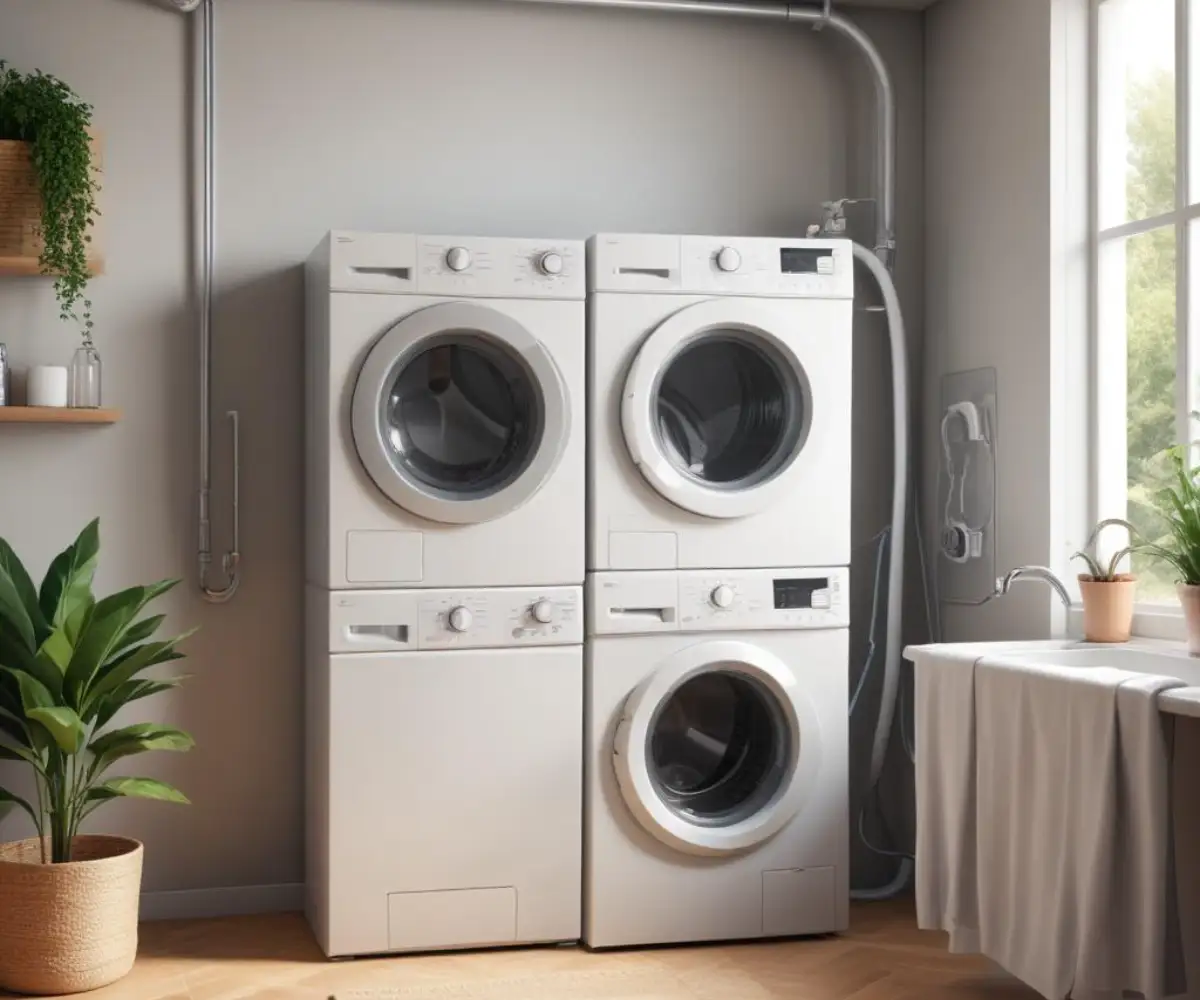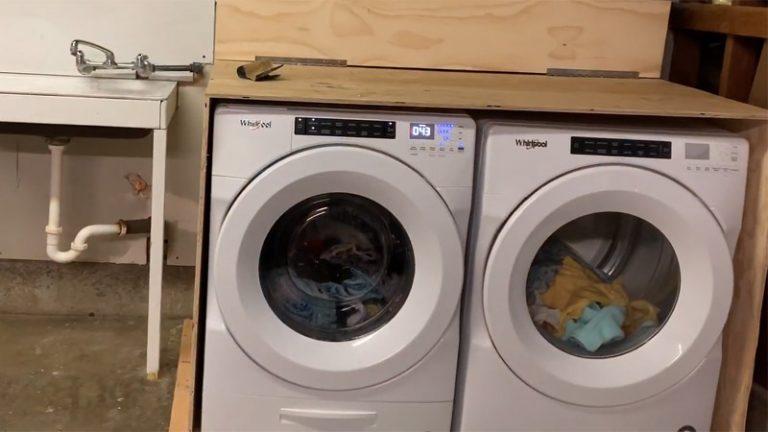PureWasher: The Hidden Reason Your Clothes Are Still Dingy & How to Fix It
You follow all the rules. You separate whites from colors, use high-quality detergent, and choose the right cycle, but your laundry is still disappointing. Your whites look yellowish, your colors appear faded, and your towels feel stiff and scratchy.
The problem might not be your washing machine or your detergent—it’s likely your water. The vast majority of homes have hard water, which is loaded with minerals that sabotage your laundry efforts from the moment you press “start.”
You'll Learn About
Why Your “Clean” Laundry Still Feels Stiff and Looks Dull
If you’ve ever felt frustrated by laundry that never seems truly clean, you are not alone. This common issue is often caused by an invisible culprit: hard water. Hard water is simply water with a high concentration of dissolved minerals, primarily calcium and magnesium.
These minerals prevent laundry detergent from working effectively. Instead of creating a rich lather that lifts dirt away, the detergent reacts with calcium and magnesium to form soap scum, leaving a residue on your clothes and inside your machine.
The Invisible Attack on Your Fabrics
Hard water minerals are abrasive and embed themselves deep within the fibers of your clothes. This buildup is what causes fabrics to feel rough and stiff. Over time, these mineral deposits act like fine sandpaper, causing fibers to weaken, fray, and break down prematurely.
This process also leads to colors fading and whites turning a dingy gray or yellow. The mineral residue coats the fabric, masking the true brightness of the colors and preventing whites from looking crisp and clean.
How Hard Water Secretly Destroys Your Washing Machine
The damage isn’t limited to your clothes. The same mineral buildup, known as limescale, accumulates inside your washing machine. It coats the heating element, forcing it to work harder and consume more energy just to heat the water.
Limescale also clogs internal hoses, pipes, and the drum itself. This reduces water flow and overall efficiency, leading to longer wash cycles and eventually, costly breakdowns. Signs of this damage include a chalky white residue inside the drum or unusual noises during operation.
Introducing the PureWasher: Your Laundry’s Ultimate Upgrade
The solution to hard water laundry problems is not more detergent or harsh chemical additives. The real answer is to treat the water before it ever enters your washing machine. This is where a dedicated laundry water filtration system, or “PureWasher,” becomes essential.
A PureWasher is a compact water treatment system designed specifically for your washing machine. It connects directly to your washer’s water supply line, filtering or softening the water to remove the problematic minerals that cause so much damage.

How Does a PureWasher System Work?
Most PureWasher systems operate using one of two primary technologies: water softening or advanced filtration. Both are highly effective at combating the negative effects of hard water on your laundry.
Water softeners use a process called ion exchange. They contain resin beads that trap calcium and magnesium ions and replace them with sodium ions, which do not react with detergent or form limescale. This is a highly effective way to protect both your clothes and your appliance.
Other systems use advanced oxidation or multi-stage filtration. These can involve technologies that create powerful, natural cleaning agents like ozone or use a series of filters to remove minerals, chlorine, and other sediments. The result is purified water that allows your detergent to perform at its best.
Choosing the Right PureWasher System for Your Home
Selecting the right system depends on your specific water quality and laundry needs. The first step is to determine the hardness of your water. Simple test kits are available that can give you a clear reading of your water’s mineral content.
For homes with extremely hard water, a traditional salt-based water softener is often the most robust solution. If you’re looking for a maintenance-free option, an electronic descaler or an oxidation system can be a great alternative. For those considering various appliance upgrades, exploring options like a Maytag water treatment system might also provide valuable insights.
A Critical Look at Point-of-Use vs. Whole-House Systems
A PureWasher is a point-of-use system, meaning it only treats the water going to your washing machine. This is a cost-effective solution if your primary concern is laundry. In contrast, a whole-house system treats all the water entering your home.
While a whole-house system offers broader benefits, it is a much larger investment. A dedicated laundry system provides a targeted, highly effective solution at a fraction of the cost, making it an excellent starting point for tackling hard water issues.
Installation Guide: A Simple Project for Better Laundry
Installing a PureWasher system is a straightforward DIY project that typically takes less than an hour. Most systems are designed to fit seamlessly with your existing plumbing, requiring no special tools or expertise. Always ensure your setup conforms to local building codes, especially concerning details like the laundry sink rough in height if you are reconfiguring your space.
Step 1: Shut Off the Water Supply. Before you begin, turn off the hot and cold water valves connected to your washing machine. It’s a good idea to place a bucket or towel underneath to catch any residual water.
Step 2: Disconnect the Hoses. Carefully unscrew the water supply hoses from the back of your washing machine. Then, disconnect the other end of the hoses from the wall valves.
Step 3: Connect the PureWasher. Following the manufacturer’s instructions, connect the PureWasher unit to the hot and cold water valves on the wall. Ensure all connections are hand-tightened first, then use a wrench to give them a final quarter-turn to prevent leaks.
Step 4: Reconnect the Washing Machine. Attach the new hoses provided with your PureWasher system from the unit’s outlet ports to the corresponding hot and cold inlets on your washing machine. Make sure these connections are also secure.
Step 5: Check for Leaks. Slowly turn the water supply back on and carefully inspect all connection points for any drips or leaks. Once you’ve confirmed everything is secure, you’re ready to run your first load of laundry with purified water.
The Long-Term Benefits: Beyond Just Cleaner Clothes
The immediate difference in your laundry will be striking. Your clothes will feel softer, look brighter, and smell fresher. But the advantages of using a PureWasher system extend far beyond the laundry basket.
One of the most significant benefits is the drastic reduction in detergent usage. With soft water, you can often cut your detergent use by 50% or more while achieving superior cleaning results. This not only saves you money but also reduces the amount of chemicals being washed into the environment.
Financial and Environmental Savings
Because your washing machine will operate more efficiently without limescale buildup, you will see a reduction in your energy bills. Your appliance will last longer, saving you from premature and expensive replacement costs. Furthermore, the lifespan of your clothes, towels, and linens will be extended, reducing fabric waste and saving you money on replacements.
| Laundry Metric | With Hard Water | With a PureWasher System (Soft Water) |
|---|---|---|
| Fabric Softness | Stiff, rough, and scratchy | Naturally soft and fluffy |
| Color Vibrancy | Dull, faded, and dingy | Bright, vibrant, and true to color |
| Detergent Usage | Full recommended amount or more | 50% less detergent needed |
| Appliance Efficiency | Reduced efficiency, higher energy use | Optimal performance, lower energy use |
| Clothing Lifespan | Reduced due to fiber breakdown | Extended, with less wear and tear |
Common PureWasher Myths Debunked
There is often confusion about water treatment systems and their impact. It’s important to separate fact from fiction to make an informed decision for your home.
Myth 1: Water softeners add a significant amount of salt to my water.
Fact: The amount of sodium added during the ion exchange process is minimal. In most cases, it is far less than what is found in a slice of bread. The primary function is to remove hardness minerals, not to make the water salty.
Myth 2: These systems are expensive and require constant maintenance.
Fact: While there is an initial investment, the long-term savings on detergent, energy, and appliance longevity often offset the cost. Many modern systems, particularly non-salt-based ones, are virtually maintenance-free.
Myth 3: Using less detergent won’t get my clothes truly clean.
Fact: The opposite is true in soft water. Hard water minerals are what inhibit detergent performance. Once they are removed, the detergent can work as it was designed to, allowing you to use far less for an even better clean.
Frequently Asked Questions (FAQ)
How do I know if I have hard water?
Common signs of hard water include stiff and faded laundry, soap scum buildup on showers and sinks, and white, chalky residue on faucets. You may also notice your soap and shampoo don’t lather well.
Will a PureWasher affect my home’s water pressure?
A properly installed and maintained laundry water filter should not have any noticeable impact on your washing machine’s water pressure. These systems are designed to work efficiently with standard home plumbing.
How often do the filters or media need to be changed?
This depends entirely on the type of system you choose. Cartridge-based filters may need to be replaced every six months, while the resin in a water softener can last for many years. Always refer to the manufacturer’s guidelines for your specific model.
Can I use a PureWasher system with a high-efficiency (HE) washing machine?
Absolutely. These systems are compatible with all types of washing machines, including both standard and high-efficiency models. In fact, using treated water can enhance the performance of HE machines by ensuring the low volume of water used is as effective as possible.

